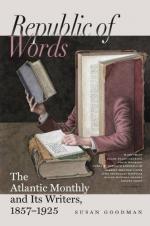Adjoining this room were two small apartments called the ephebeum and the elaeothesium respectively. The former was devoted to preparatory exercise, probably by way of warming up for severer efforts; the latter was used for anointing, and was connected with the baths, which followed next in order. These were the frigidarium, the caldarium, the sudatorium, and the tepidarium, for the cold, the hot, the sweating or vapor, and the warm baths. They did not possess the magnitude and ornament of the Roman thermae. They were used in connection with and after exercising, and were enough for all practical purposes. Bathing was not then the business of hours every day, as it was later in the Roman Empire, when the luxurious subjects of Caracalla indulged several times in the twenty-four hours in such a variety of ablutions as would have satisfied a Sandwich-Islander.
We have now arrived at a point nearly opposite our entrance at the east, and, continuing round the southwest, south, and southeast sides of the peristyle, find a large number of consecutive chambers devoted mainly to the philosophers, as lecture-rooms and auditories for their classes and followers. On the north side of the peristyle is a double portico containing the exedrae, or seats of the sophists, where each most cunning rhetorician delivered his opinions ex cathedra, and lay in wait for any passer whom he could insnare into an argument. The groves of the great western court were probably used by the lounger, the contemplative, and the studious, if we may judge by numerous seats and benches, at convenient intervals. On the south side of these was again a double portico; and on the north, outside the pillars, the xystus, or covered porch, where the athletes exercised in winter and in bad weather. The arena was twelve feet wide, and sunk a foot and a half below a marginal path of ten feet, where spectators could walk. On the north and south sides of the whole building were wings, of less width, extending nearly its entire length. That on the north contained the stadium, or foot-race course, which was, however, sometimes disconnected from the gymnasium. The south wing was of like dimensions, and adorned with plane-trees and walks, forming a more private retreat.
It will be readily conceived that this vast area was not devoted exclusively to physical exercises. Logic, rhetoric, and metaphysics claimed their place in this common focus of the city’s life, and were the delight of the subtile Greeks. The Socratic reasoning and the syllogisms of Aristotle met here on common ground. The Stoics, with their stern fatalism, derived their name from the stoae, or porticos; the Peripatetics imparted their ambulatory instructions under the plane-trees of the Lyceum—and Plato reasoned in the Academy, which he held with his school, and into which no ungeometrical mind was to enter. And though some dog of a Cynic might




